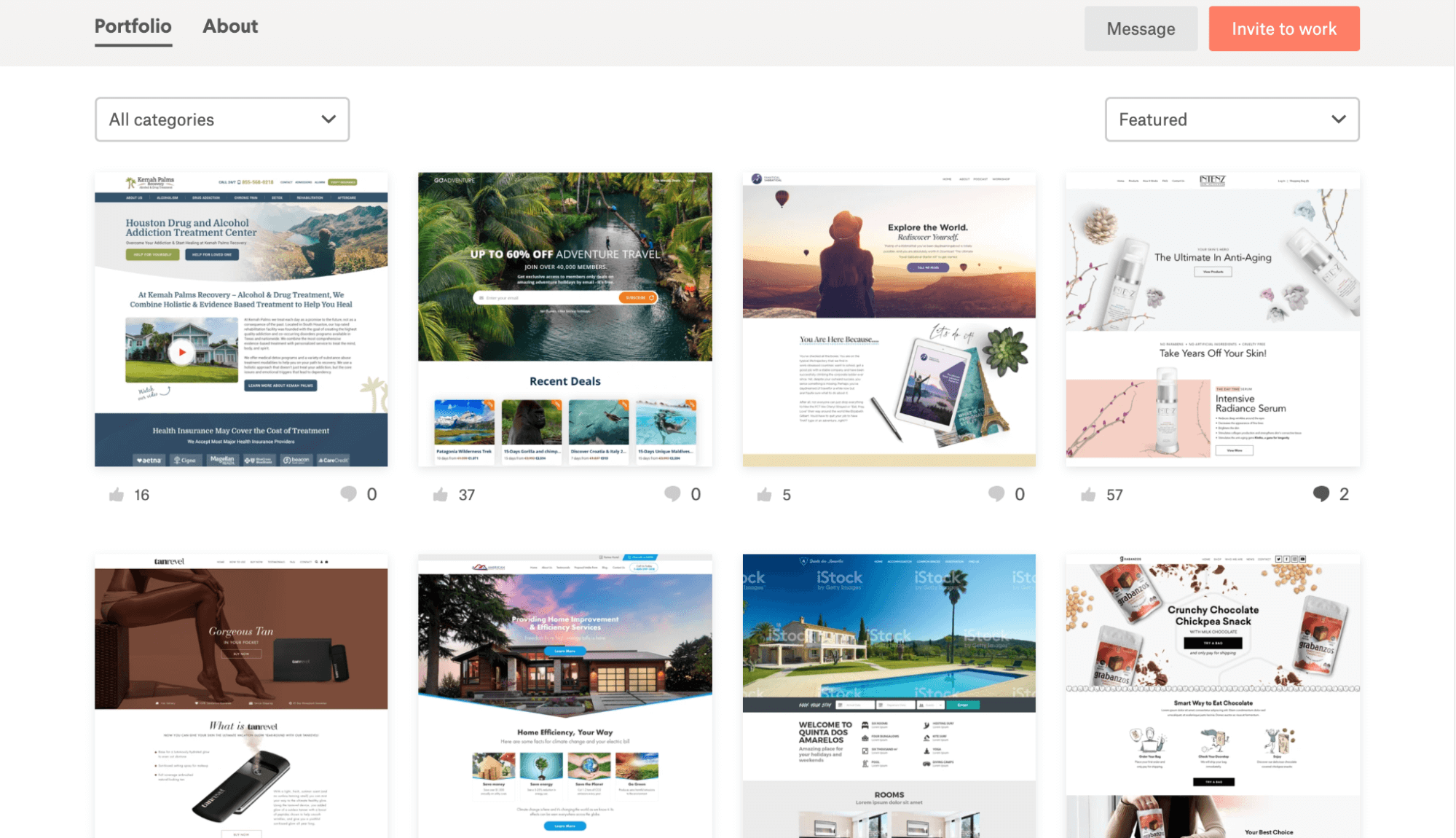The Value of Responsive Site Layout in Today's Digital Landscape
In an age where electronic interactions are increasingly performed across a myriad of devices, the significance of responsive website design can not be overemphasized. A well-optimized website not only enhances individual experience but likewise plays a critical function in improving search engine optimization positions, which are important for on-line presence. As mobile website traffic proceeds to surge, services that focus on receptive design setting themselves to fulfill user expectations properly. The effects of this design technique expand much past mere appearances; the future of online engagement may hinge on exactly how well companies adapt to these progressing criteria. What variables should be considered to make sure lasting success?
Improved User Experience
Enhancing user experience is a basic objective of responsive site design. A responsive website adapts seamlessly to numerous display dimensions and tools, guaranteeing that users encounter constant functionality regardless of whether they are accessing the site using a mobile phone, desktop computer, or tablet - Website Design. This flexibility is vital in today's electronic landscape where users expect immediate access to info and solutions
Responsive layout enhances navigating by enhancing layout and material presentation based upon the device being utilized. This leads to lowered scrolling, streamlined food selections, and properly sized pictures, which all add to a more intuitive searching experience. Moreover, responsive web sites fill faster on mobile phones, minimizing waiting times that can cause individual stress and prospective website desertion.
Incorporating receptive design not just enhances satisfaction but also promotes user involvement and retention. They are a lot more most likely to recommend the site and return to others when users locate web content that is very easy to gain access to and navigate. Inevitably, spending in responsive internet site style reflects a commitment to meeting user needs, promoting a positive partnership between the internet site and its target market, and boosting overall brand track record.

Boosted SEO Rankings
One of the substantial benefits of responsive internet site design is its capability to increase SEO positions. Online search engine focus on web sites that offer an ideal user experience across various devices. A receptive design, which adapts effortlessly to various display dimensions, lowers bounce rates and motivates much longer site brows through-- two critical aspects that influence online search engine algorithms.
Websites that are not maximized for mobile tools may face penalties, leading to lower presence in search results. By applying receptive design, organizations make sure that their material is available and interesting, regardless of the device being used.
Additionally, a single link for both desktop computer and mobile versions streamlines the indexing process for search engines, as they can conveniently recognize the site and creep framework. This unified technique gets rid of duplicate material concerns, further improving SEO end results. Eventually, buying a responsive site layout is a strategic action that sustains greater internet search engine positions, driving natural traffic and increasing overall online visibility.
Enhanced Mobile Web Traffic
The rise in mobile website traffic has ended up being a specifying feature of modern-day internet usage, essentially improving exactly how companies approach their on-line existence. With a boosting number of customers accessing the web via tablet computers and smartphones, companies need to focus on receptive website style to ensure optimum user experiences across diverse devices.
As mobile web traffic continues to rise, businesses that fail to adjust danger alienating a considerable portion of their target market. Website Design. A receptive layout allows websites to automatically change to different display dimensions and resolutions, providing smooth navigation and access. This adaptability is important, as inadequate mobile experiences can bring about high bounce rates and shed conversions
Furthermore, the significance of mobile traffic is emphasized by internet search engine like Google, which focus Look At This on mobile-friendly sites in their ranking formulas. When developing digital material., this shift emphasizes the need for organizations to not only boost their mobile interfaces however also to take into consideration user habits and preferences.
Ultimately, accepting receptive internet site design not just deals with the growing mobile audience but also strengthens brand name reputation and involvement, placing companies for success in a significantly mobile-centric digital landscape.
Economical Upkeep
Maintaining a responsive internet site layout can substantially reduce long-lasting prices for companies. By carrying out a single layout that adapts to different devices, companies remove the demand for multiple website versions, lowering advancement and maintenance expenses. This structured method not just saves sources yet additionally simplifies updates and improvements.
With a receptive style, organizations can concentrate on maximizing one site instead of managing several, making certain consistency in branding and user experience across all platforms. Furthermore, responsive web sites tend to rank much better in search engines, possibly reducing the prices related to search engine optimization efforts.
When it involves updates, a linked platform means that new functions or web content can be turned out without the headache of changing numerous distinctive websites. This effectiveness enables quicker turnaround times, allowing organizations to react to market modifications or consumer needs quickly.
Additionally, as innovation evolves and brand-new tools emerge, organizations with responsive designs will deal with less difficulties in adapting their internet sites. This future-ready approach minimizes the likelihood of incurring unforeseen prices linked with redesigns or system movements. By prioritizing receptive layout, business can attain long-term financial sustainability while keeping an one-upmanship in the digital landscape.
Future-Proofing Your Website
Expecting the future of website design is critical for organizations intending to remain relevant in an ever-evolving digital landscape. As innovation advances, individual expectations shift, requiring web sites that not only look enticing but likewise function seamlessly across different tools and platforms. Future-proofing your internet site involves applying adaptive style concepts that suit emerging technologies, such as voice search and man-made knowledge.
To attain this, organizations must focus on versatile formats, click here to find out more scalable graphics, and very little filling times. Embracing a mobile-first approach makes sure optimal performance throughout the increasing number of mobile individuals. Website Design. Furthermore, incorporating dynamic internet applications (PWAs) can enhance user experiences by providing fast, trusted access despite network conditions.
Frequently upgrading content administration systems and structures is important to maintain security and capability. Furthermore, utilizing receptive style principles permits web sites to change easily to new devices and display dimensions. Organizations must additionally take into consideration ease of access requirements to ensure inclusivity for all individuals.
Conclusion
In verdict, responsive web site style plays an essential role in enhancing customer experiences in the contemporary digital landscape. Eventually, spending in receptive design ensures versatility to future technical improvements, solidifying brand name trustworthiness and fostering long-lasting on the internet existence in an ever-evolving digital setting.

Furthermore, as modern technology develops and new tools arise, companies with receptive designs will deal with less challenges in adjusting their websites.In conclusion, receptive internet site design plays a critical function in optimizing user experiences in the contemporary digital landscape.